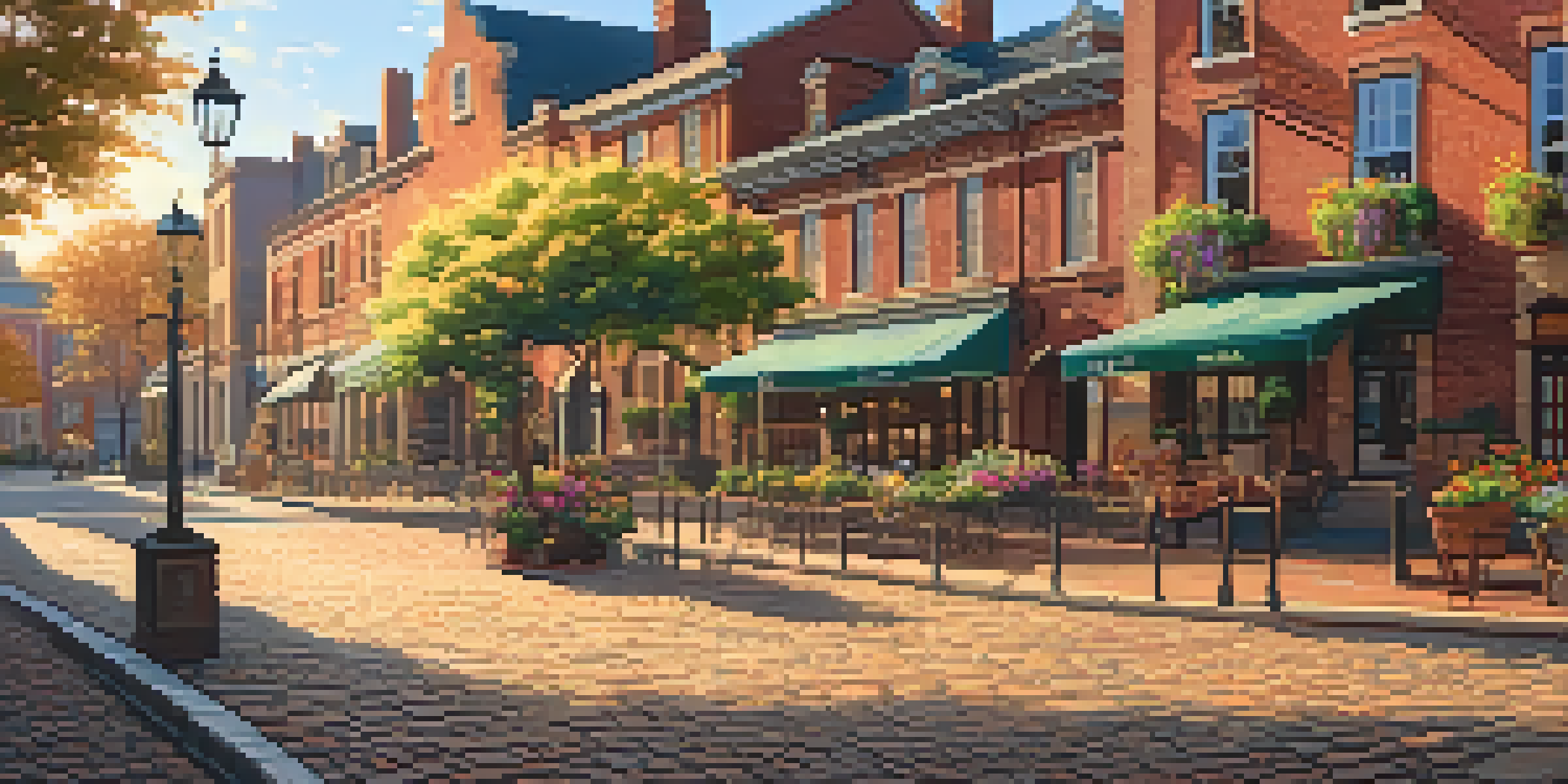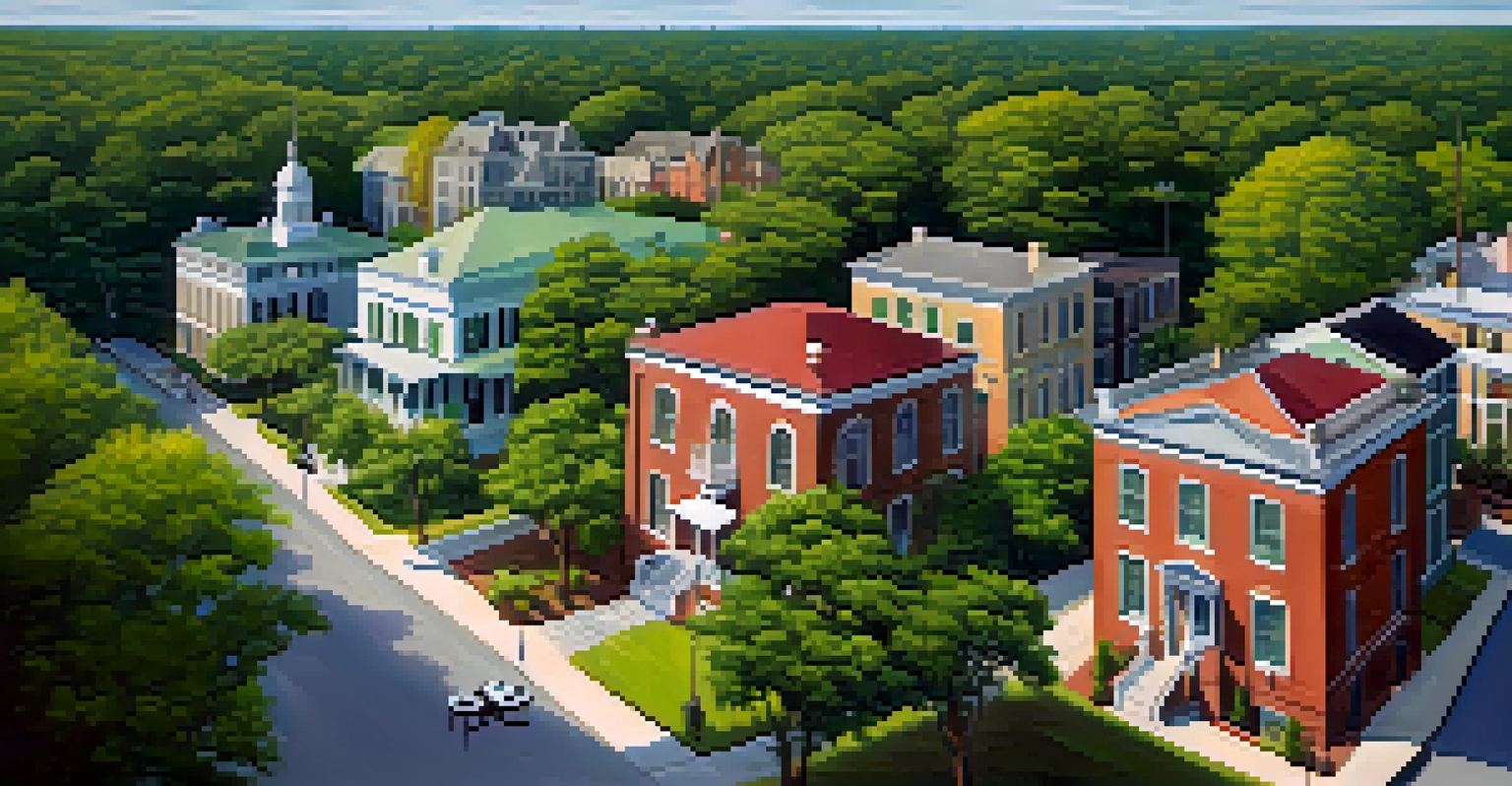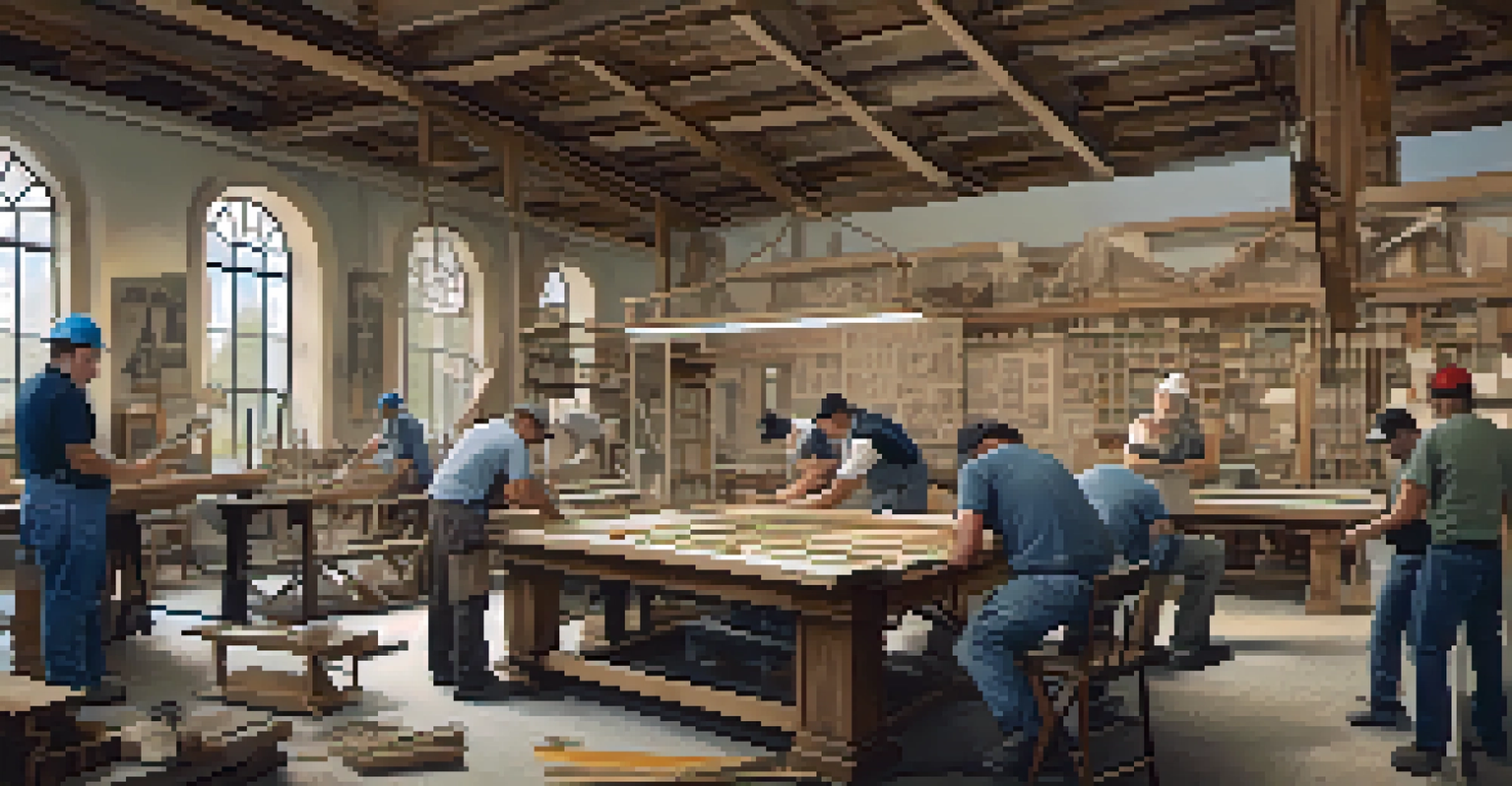Preserving the Past: Historic Architecture Conservation Efforts

The Importance of Historic Architecture Conservation
Historic architecture plays a crucial role in our cultural heritage, serving as a tangible link to our past. These buildings tell stories of the communities that built them, reflecting their values, challenges, and triumphs. Preserving such structures allows future generations to understand and appreciate their history.
Preservation of historic buildings is not only a matter of aesthetics; it is a matter of cultural identity and heritage.
Moreover, historic buildings often contribute to the character of a place, enhancing tourism and local economies. Think about how a charming old town with preserved architecture draws visitors eager to experience its unique atmosphere. This economic benefit further underscores the necessity of conservation efforts.
In essence, conserving historic architecture is not just about saving old buildings; it's about safeguarding the identity and legacy of our communities. Each preserved structure is a chapter in a larger narrative that deserves to be honored and remembered.
Common Challenges in Architecture Conservation
One of the primary challenges in historic architecture conservation is the balance between modernization and preservation. As cities grow and evolve, the pressure to develop can often overshadow the need to maintain historical integrity. This can lead to the demolition of important structures in favor of new developments.

Another hurdle is the financial aspect of preservation, which can be quite daunting. Restoration projects often require significant investment, which may not always be readily available. Communities must grapple with the question of how to allocate limited resources effectively to protect their architectural heritage.
Preserving Our Cultural Heritage
Conserving historic architecture helps safeguard the identity and legacy of communities for future generations.
Additionally, there’s the issue of finding skilled professionals who are trained in traditional building techniques. As fewer craftsmen possess these rare skills, the art of conservation can be at risk, emphasizing the need for training and education in this field.
Key Strategies for Successful Conservation
Successful historic architecture conservation often begins with comprehensive assessments. This involves evaluating the condition of structures and determining the necessary steps for preservation. A thorough understanding of the building's history, materials, and construction methods is essential to create an effective conservation plan.
We do not inherit the earth from our ancestors; we borrow it from our children.
Community engagement is another vital strategy. Involving local residents in conservation efforts fosters a sense of ownership and pride in their heritage. When community members are educated about the value of their historic architecture, they are more likely to support preservation initiatives.
Lastly, forming partnerships with organizations dedicated to heritage conservation can amplify efforts. Collaborating with non-profits, government agencies, and educational institutions can provide additional resources and expertise, making conservation projects more viable and impactful.
Innovative Technologies in Preservation
In recent years, technology has played a transformative role in architecture conservation. Tools like 3D scanning and modeling allow conservationists to create precise digital replicas of historic buildings. This not only aids in restoration efforts but also helps in documenting structures for future reference.
Drones have also become valuable assets in the field, enabling detailed aerial surveys of hard-to-reach sites. This technology provides insights into the structural integrity of buildings without the need for invasive inspections. It's a game-changer for conservationists aiming to assess conditions while minimizing disruption.
Community Engagement is Key
Involving local residents in conservation efforts fosters pride and ensures more meaningful preservation projects.
Furthermore, materials science has advanced significantly, offering innovative solutions for repairs. Modern conservation practices now utilize materials that closely mimic the original while providing added durability, ensuring that historic structures can withstand the test of time.
The Role of Legislation in Preservation Efforts
Legislation plays a pivotal role in the conservation of historic architecture. Laws and regulations can protect significant buildings from demolition or inappropriate alterations. This legal framework is essential for ensuring that communities have the tools needed to preserve their architectural treasures.
In many countries, heritage designation can grant properties additional protections and funding opportunities. For instance, buildings listed on national registers often qualify for grants and tax incentives, making preservation projects more feasible. This financial support can be a crucial factor in ensuring the survival of historic sites.
However, legislation must be balanced with the needs of property owners. Policymakers should engage with communities to create regulations that protect heritage while allowing for reasonable development. This collaboration can lead to more sustainable and effective conservation outcomes.
Community Involvement in Conservation Projects
Community involvement is the heartbeat of successful historic architecture conservation. When local residents are engaged in preservation efforts, they bring unique insights and passion to the table. This grassroots approach often leads to more meaningful and sustainable conservation projects.
Organizing local workshops and events can educate the community about the importance of their architectural heritage. For example, a neighborhood might hold a 'historic homes tour' to showcase restored properties, generating interest and support for further conservation efforts. These activities not only raise awareness but also build connections among residents.
Technology Enhances Preservation
Innovative technologies like 3D scanning and drones are transforming how conservationists assess and restore historic buildings.
Additionally, volunteer opportunities in conservation work can cultivate a sense of pride and ownership. When community members roll up their sleeves to restore a beloved landmark, they forge a deeper connection to their heritage, ensuring that the stories and values embodied in these structures continue to live on.
Success Stories in Historic Architecture Conservation
There are numerous inspiring examples of successful historic architecture conservation around the world. Take the example of the restoration of the historic district of Savannah, Georgia, which showcases stunning antebellum architecture. This meticulous preservation effort has transformed the area into a vibrant tourist destination while maintaining its historical character.
Another notable success is the revitalization of the High Line in New York City. What was once an abandoned elevated railway has been transformed into a lush public park, all while preserving the original industrial architecture. This project illustrates how adaptive reuse can breathe new life into historic structures.

These success stories highlight the potential for conservation to not only protect our past but also enhance our present and future. By investing in preservation, communities can ensure that their unique architectural heritage remains a source of pride and inspiration for generations to come.